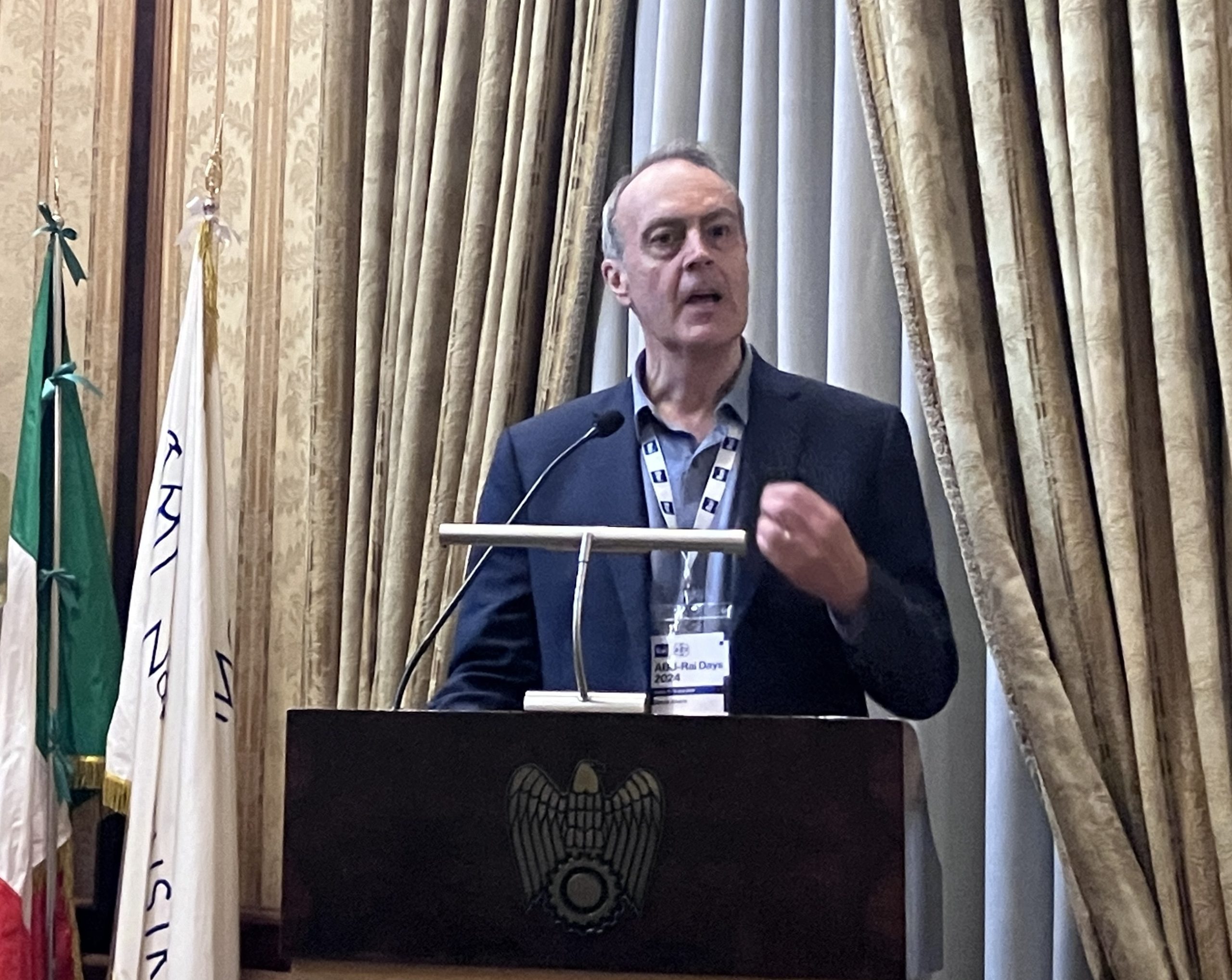The next evolution of broadcasting will be driven by three types of AI. “A combination of Artificial Intelligence, Audience Interaction and sophisticated Audio Interfaces,” according to Steve Ahern.
Speaking at an international conference of European and Asian broadcasters in Naples, Ahern outlined the next strategic technological steps that responsible broadcasters and publishers will need to take as face the future.
The current wave of AI technology combines fast, deep learning with large language models to open up new ways for audiences to interact with media. It also poses some potential problems for responsible broadcasters and publishers, which can be solved with strategic planning.
Distinguishing responsible from irresponsible media, Ahern referred to his speech at the United Nations in Paris two years ago where he defined responsible media as those that check first and publish after, contrasted with irresponsible media, which publishes first and checks later.
In today’s fast moving modern information society, AI, used well, can help to surface good journalism and responsible reporting from trusted sources, to counter disinformation and fake news.
Ahern outlined the technological path for broadcasters to follow as they evolve to the next stage of the AI driven information era.
“You have trusted, responsibly sourced news, information and entertainment content stored in your systems. Audiences want that content, but as technology evolves, finding it through search will no longer be enough, they will expect it to be presented to them in a faster, more conversational form. Audio will be at the heart of that conversation.”
To take advantage of their trusted content, broadcasters and publishers need to reclaim more control of their content, according to Ahern.
- Safeguard your content behind strong firewalls so that it is less easily manipulated by third party AI bots
- Chose a professional industry grade Generative AI system that does not use the questions, answers and your data to train other systems. If something is free, you are the product. Check the terms and conditions of free systems to see if you are agreeing to give them all your information in return for using their software, if so, don’t use it.
- Integrate the Generative AI engine with the synthesised voice of one of your trusted on air personalities or news presenters. Pay them more for the residual rights to use their voice.
- When delivering answers, give the audience choices: How long do you have? How much information do you want? Do you want me to show you some video clips on your smart tv? Do you want to hear the voices of people from our radio programs when I quote them? Do you want me to tell you the sources from our archived programs I used to gather this information?
- Audience questions help to train the A.I. Safeguard the questions as well as the answers behind your data firewall.
- Charge something for the output of your sophisticated interactive offering through a fee, or by bundling it with other things such as subscriptions or advertising. If you are a public broadcaster set a limit to free content per day, geoblock it and charge a fee for content delivered outside your country.
- Use sophisticated A.I. tools to detect when other AI bots are using your system and charge them a fee to do so. Only supply the answers to other bots, don’t supply your exclusive sources.
The ABU-Rai Days conference is an annual collaboration of European and Asian Broadcasters covering the latest trends and developments in media and technology. This year it is being held in Naples, hosted by the Italian national broadcaster RAI.
The conference continues this week.
Steve Ahern is an internationally recognised thought leader in media and broadcasting. He is currently the manager of ABC Radio Sydney, where he has been involved with moving the station to future-ready digital studios in Parramatta. He recently announced he would leave the ABC to resume international training and consultancy activities and write a new edition of his Making Radio and Podcasts textbook
Ahern was previously the Director of the ABU Media Academy, Director of Radio at AFTRS, and on the boards of the Community Broadcasting Foundation and one of the world’s first catch-up radio technology companies Rewind Radio. In 2009 he was awarded an Order of Australia Medal for services to broadcasting and education. He is the founding editor of radioinfo.

